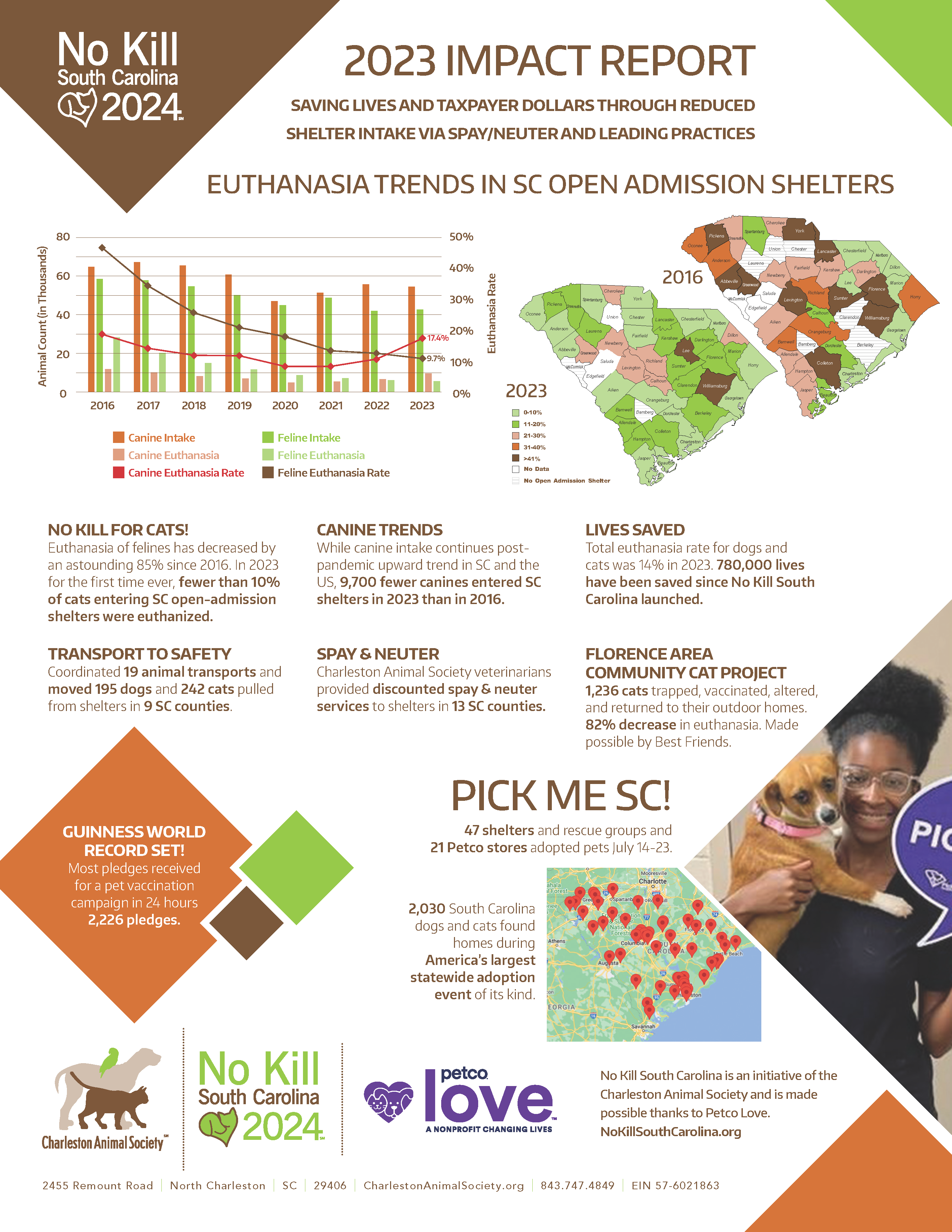
Lifesaving Statistics
Since 2013, Charleston Animal Society has been committed to saving every healthy and treatable animal in Charleston County and as a result creating the first No Kill Community in the Southeast. Instead of using a specific number to determine what makes a No Kill Community, Charleston Animal Society uses the Asilomar Accords definitions for “Healthy and Treatable” to guide the outcome decisions for shelter animals.
The Asilomar Accords refer to a set of principles and guidelines developed in 2004 during the Asilomar International Conference on Animal Sheltering. This conference brought together experts and stakeholders from the animal welfare community to address challenges and establish standards for animal sheltering practices.
Live release rates, save rates, and euthanasia rates provide a narrow view of shelter performance and do not consider other important welfare indicators, such as the length of stay for animals, the provision of veterinary care, behavioral enrichment programs, and efforts to reunite lost animals with their owners. These factors along with the definitions of the Asilomar Accords are crucial in assessing the overall welfare of animals in shelters.
Although these rates are often used as a metric in animal shelters, they are all arbitrary and may not fully capture the complexities of lifesaving efforts, but unfortunately, most animal shelter in South Carolina do not use the more comprehensive Asilomar Accords.
In addition to our values of Leadership, Tradition, and Excellence, Charleston Animal Society is dedicated to being transparent and accountable for the animals in our care. In that spirit we publish our lifesaving statistics showing the various Live Release and Save Rates as well as the trending of sheltered animals in our community and beyond.
Euthanasia Trends (As of January 1, 2024)
- South Carolina: 14%
- Charleston County: 10%
No Kill Charleston
Overall Lifesaving Statistics

Canine Intake and Outcomes

Feline Intake and Outcomes

No Kill South Carolina



